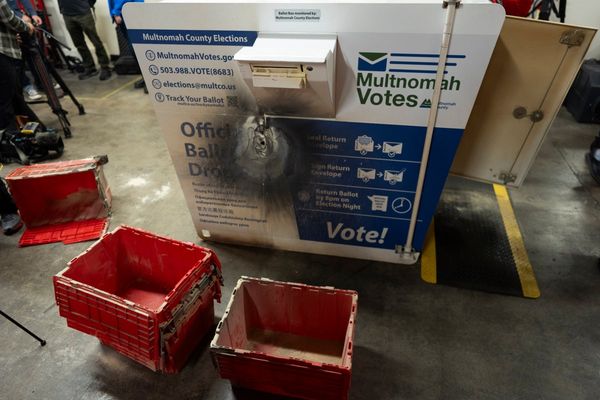
Shell will this week unveil a plan to dismantle four enormous oil rigs in the North Sea, kicking off a vast and controversial decommissioning project.
The Brent field rigs were built in the 1970s and produced around a tenth of the UK’s North Sea oil. But three of the four – Alpha, Bravo and Delta – have now shut down, and this summer the company will embark on a multibillion-pound eight- to 10-year project to remove the vast drilling and accommodation structures.
The plan being submitted to the Department of Business, Energy and Industrial Strategy has been a decade in the making, as the group has consulted community groups, academics, fishermen and environmentalists in an attempt to avoid a repeat of the Brent Spar debacle.
When the company proposed sinking the Spar oil storage buoy in 1995, it prompted protests by Greenpeace, petrol boycotts in Germany and a falling share price. Shell was eventually forced to back down and find a more environmentally-friendly plan.
Duncan Manning, who spent 19 years with the Royal Marines and is now one of the team charged by Shell with overseeing the decommissioning of Brent, is confident the group won’t repeat the mistakes of the past.
“I think there have been a number of lessons from Brent Spar – lessons we have learned, and also the [regulatory] environment has changed,” said Manning, Shell’s business opportunity manager for Brent.
Once Shell is past the 60-day consultation beginning this week, it will switch to an engineering task Manning sums up as “large, complex and challenging”.
Brent, which started pumping in 1976, is not the first field to be decommissioned in the North Sea, but it is one of the biggest. And the remote nature of the rigs – more than 100 miles north of Shetland in deep, hostile waters – together with the unusual concrete construction of three of the rigs pose a unique challenge.
Shell’s answer is a vast ship currently moored in Rotterdam, which will attempt to lift the entire 24,000-tonne topside of the Delta platform – in one go, possibly as soon as May.
It will be the heaviest ever single lift, and only the second for the Pioneering Spirit vessel after it removed a topside half the weight off Norway last year. To prepare the rig for lift-off around 1,500 people were working last year to reinforce the Delta platform, welding steel to strengthen it, so the topside did not disintegrate when lifted.

“That has been a change in the industry. In the past platforms have been removed a small piece at a time,” said Manning. Removing platforms in a single lift was a “large swing”, he added. The platform will then be taken by ship to a former shipyard in Hartlepool, where most of the steel will be recycled and sold off.
But under Shell’s plan, plenty of Brent’s manmade structures will stay in the North Sea. The company is applying for an exemption from international rules that require everything is removed. Since the outcry over Brent Spar, the Ospar treaty has banned the dumping of old installations, or leaving them wholly or partly in place.
Shell’s argument is that Brent platforms were built in haste and, unlike later rigs, were never designed to be removed. It insists the safest and most environmentally-friendly option is to leave the 300,000-tonne concrete bases beneath three of the platforms, with the concrete legs left to poke out of the water as a navigational aid for fishermen.
Oil will also be left in huge storage cells, entombed in metre-thick concrete, as will oil mixed up with broken material on the seabed from when the wells were drilled. “This isn’t Shell and [joint partner] Exxon making up science to suit our purposes,” said Manning, pointing to independent research commissioned by the company.
While green groups agree with the principle that some elements would be best untouched, they disagree on just how much Shell plans to leave behind and believe the oil company is watching costs. “The oil within the cells and some of the drill cuttings are above limits that internationally agreed standards recommend. Those standards say they should be removed in order to prevent damage to the environment,” said Lang Banks, director of WWF Scotland.
“The main thing preventing this from being done in this particular case is the cost. Shell should do the right thing and remove these potentially polluting materials.”
If the company is granted an exemption – as expected – it won’t be the first but it would become one of a select group. Just five exemptions have been issued by Ospar for 124 installations decommissioned since the rules came into force in 1998.
“This is a test case, so we want to see that expression of international law enforced, and not at the first point of challenge for there to be backtracking,” said Doug Parr, chief scientist at Greenpeace.
Parr said the group would make a judgment on the environmental impact once the plan is published, and refused to rule out taking direct action, as the group did when it occupied Brent Spar for weeks.
Some people, however, think Shell should leave the entire rig structures to be swallowed up by the waters. Ed Davey, the former Liberal Democrat energy minister, argued last month that the platforms should just be left, to one day become a reef for marine life, on environmental and cost grounds.
That won’t be Shell’s approach for Brent. But it is a view voiced at the company’s senior levels, perhaps with an eye both on saving money and any scrutiny of the 70% tax relief the company will enjoy against the cost of decommissioning.
“Around Brent Spar, the offshore disposal was acknowledged even by Greenpeace, albeit in small print after they had taken quite violent action against Shell assets, as the best environmental outcome,” said Simon Henry, the group’s outgoing chief financial officer.
“I do think, this is for the industry as a whole, there needs to be a sensible discussion of cost. Because at the end of the day the government is supporting a lot of the cost through the tax regime, and that means voters are paying for it. And it is not a time to be spending money unnecessarily, just because of the principle.”
Manning defended the tax relief arrangements as “nothing unusual” and pointed out the field had contributed £20bn in tax to the Treasury over its lifetime. “It is tax relief, not a subsidy,” he said.
Taxpayers may think differently. Oil companies get between 40% and 75% tax relief on their clean-up costs, and analysts Wood Mackenzie estimated that will land the UK government with a £24bn bill, or 45% of the total future decommissioning cost for the North Sea.
Shell estimates the cost of dismantling Brent alone will be in single digit billions of pounds, a big hit even for a company that reported $3.5bn in profit last year.
But critics think the tax regime is unjust. “The massive tax breaks being offered to the oil and gas industry to clean up its toxic legacy amount to yet another subsidy to the fossil fuel industry,” said Banks.
“It’s hardly a big ask for the companies to pack up and clean up when they’re finished,” said Greg Muttitt, a campaigner at Oil Change International. “Why should the taxpayer carry the tab for most of the decommissioning costs, when oil revenues have gone disproportionately to the companies?”
Brent in numbers
- Four platforms. Only one, Charlie, is still producing.
- 300,000 tonnes – the weight of each of the gravity bases at the seabed holding three of the rigs in place.
- 17,000 tonnes – the amount of steel in the structure for the fourth platform
- 103km – length of pipelines under the sea
- 140 – wells, which Shell is in the process of capping off
- 180 – number of ‘stakeholders’ the company has consulted with







